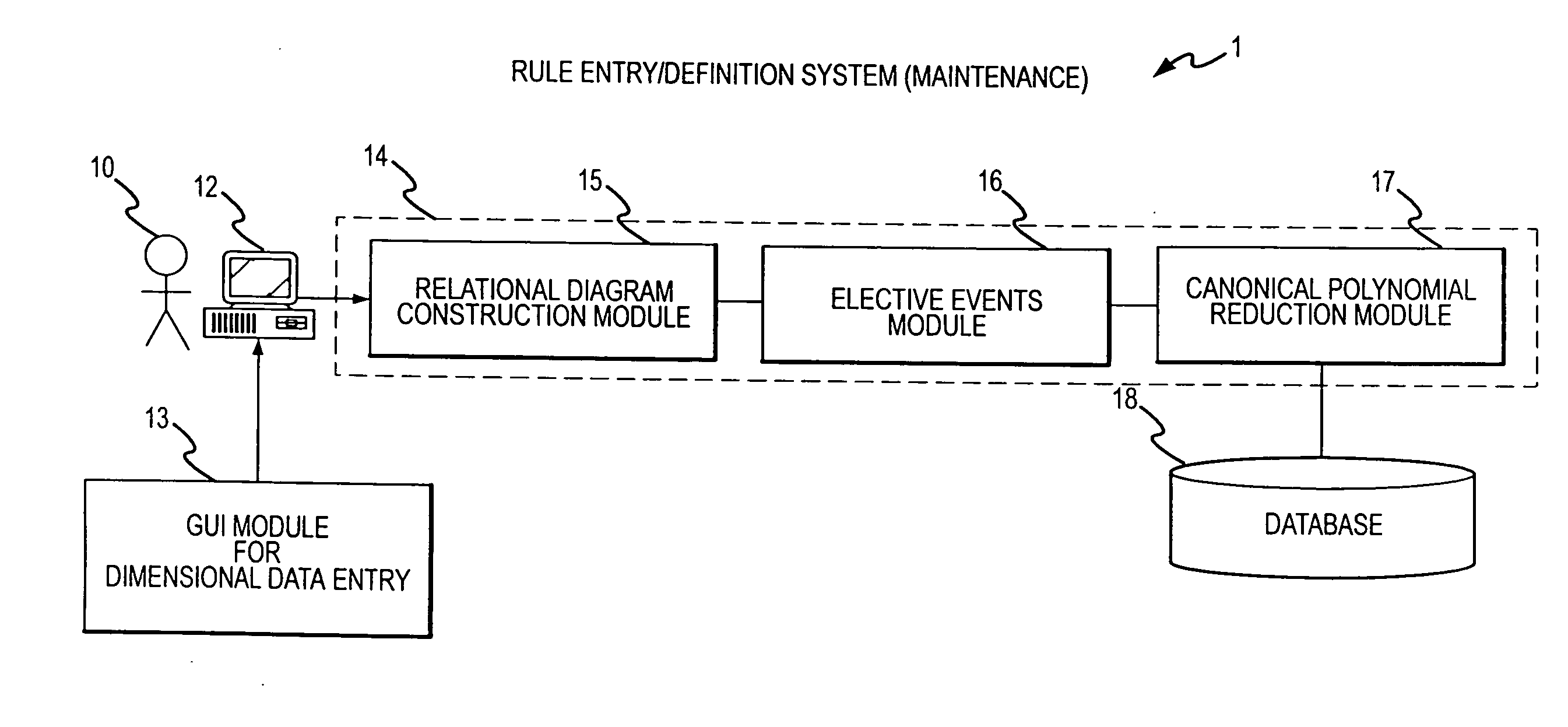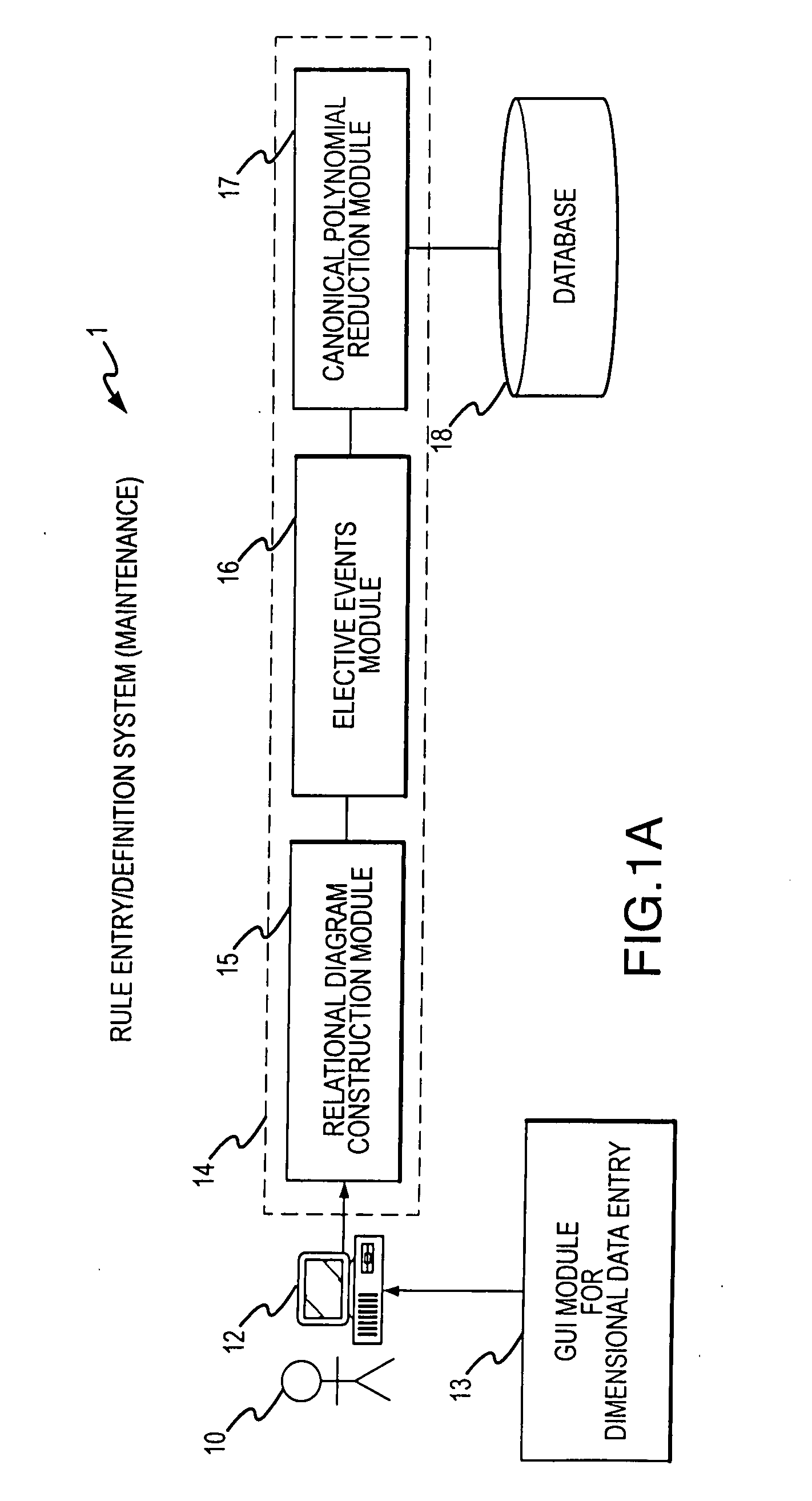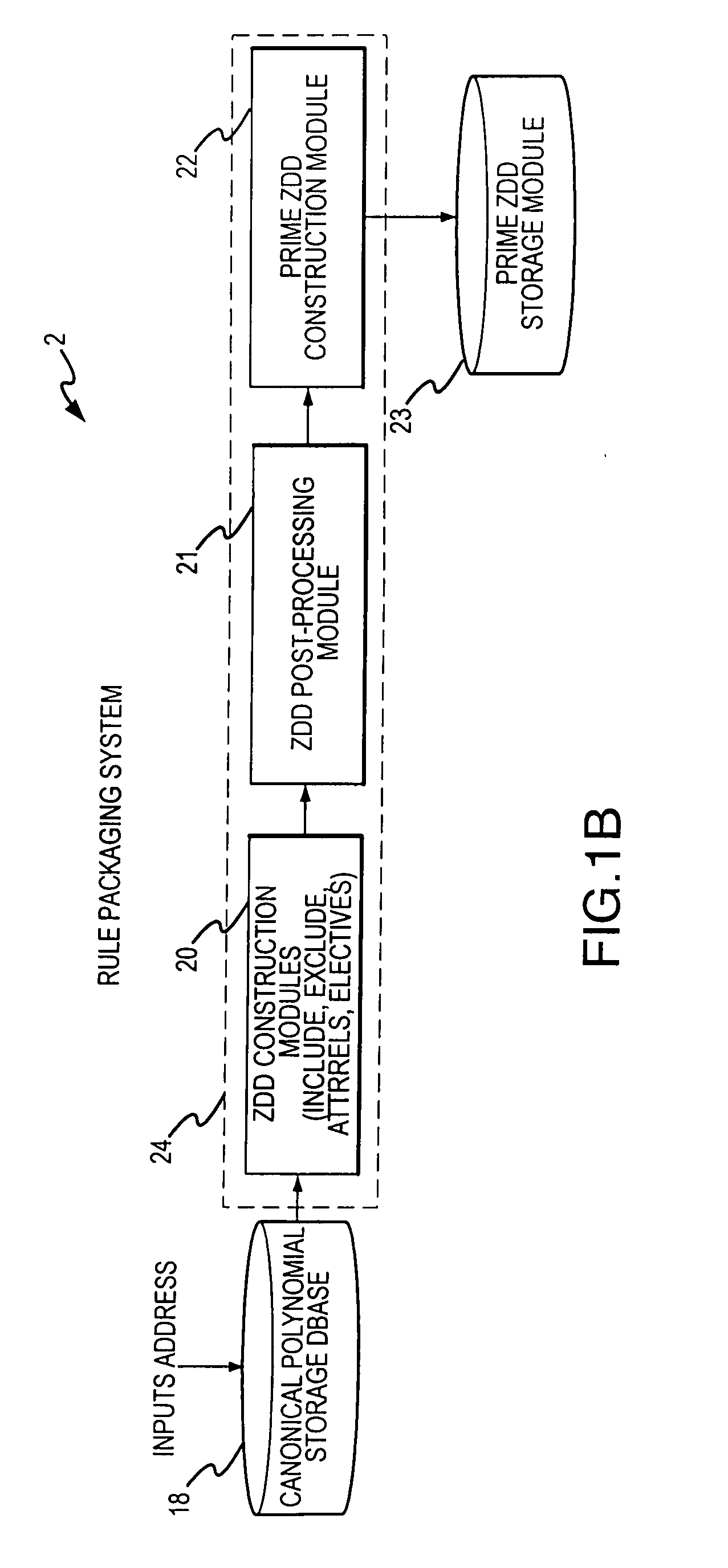Rule processing system
a rule processing and rule technology, applied in the field of rule processing, can solve the problems of unacceptable run times of many prior decision automation systems, many challenges in model checking for formal verification of commercial software, and virtually impossible to process within acceptable time limits, and achieve the effect of exceeding the computational capacity of present day computing systems
- Summary
- Abstract
- Description
- Claims
- Application Information
AI Technical Summary
Benefits of technology
Problems solved by technology
Method used
Image
Examples
Embodiment Construction
[0046]FIG. 1A shows a rule entry system 1 that enables a subject matter expert or data entry personnel to capture rules where data entry personnel or an expert user 10 preferably interacts with a GUI module 13 of terminal 12 using a keyboard and mouse to define attributes, enumerations or properties of those attributes, and relationships between and among such attributes, enumerations, and properties.
[0047] The rule entry system includes a processor that preferably implements a procedure described in connection with FIG. 1E. The processor preferably executes a relational diagram construction module 15 that aids user 10 in generating relational diagrams representing the rule to be processed. Elective events module 16 permits the user 10 to assign certain elective events to be triggered upon occurrence of certain conditions occurring in response to end-user inputs during execution (subsequently described) while canonical polynomial reduction module 17 reduces the entered rules to a c...
PUM
 Login to View More
Login to View More Abstract
Description
Claims
Application Information
 Login to View More
Login to View More - R&D
- Intellectual Property
- Life Sciences
- Materials
- Tech Scout
- Unparalleled Data Quality
- Higher Quality Content
- 60% Fewer Hallucinations
Browse by: Latest US Patents, China's latest patents, Technical Efficacy Thesaurus, Application Domain, Technology Topic, Popular Technical Reports.
© 2025 PatSnap. All rights reserved.Legal|Privacy policy|Modern Slavery Act Transparency Statement|Sitemap|About US| Contact US: help@patsnap.com



